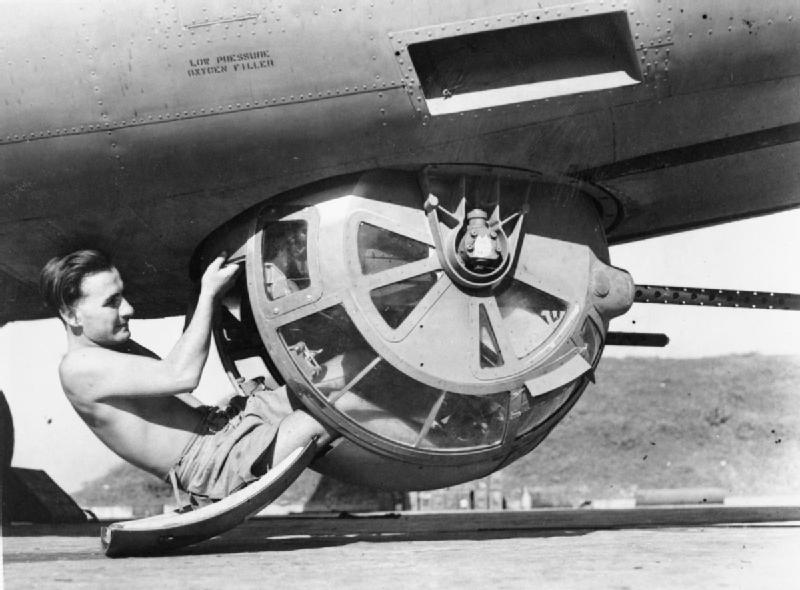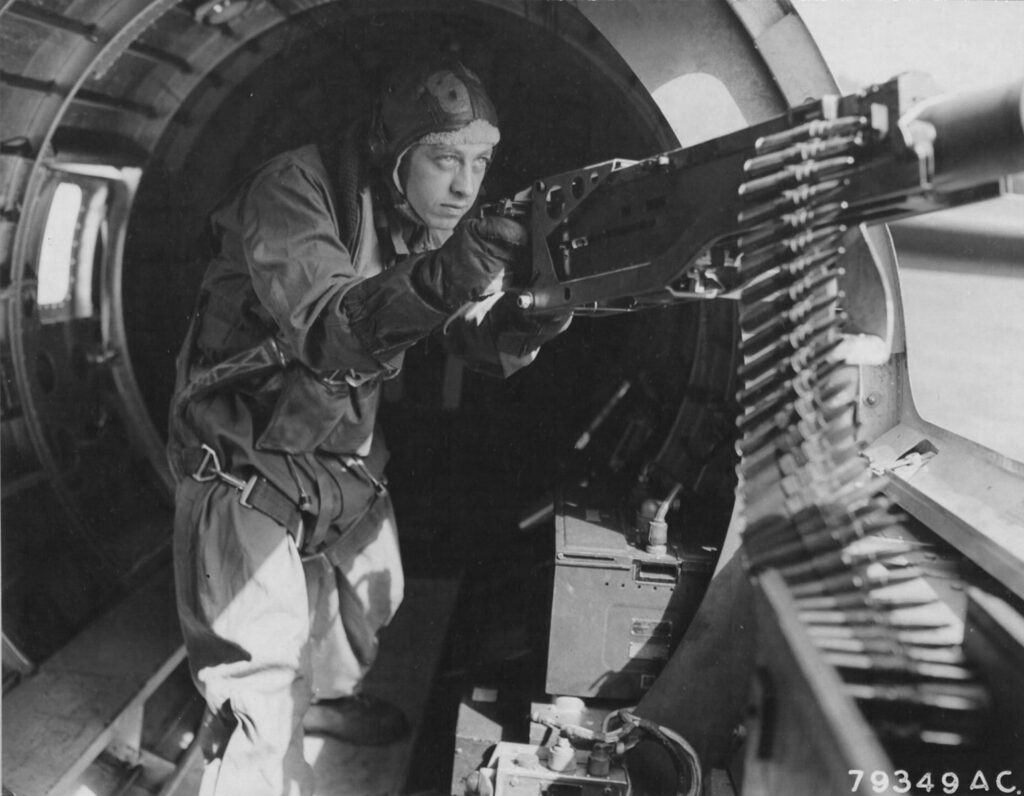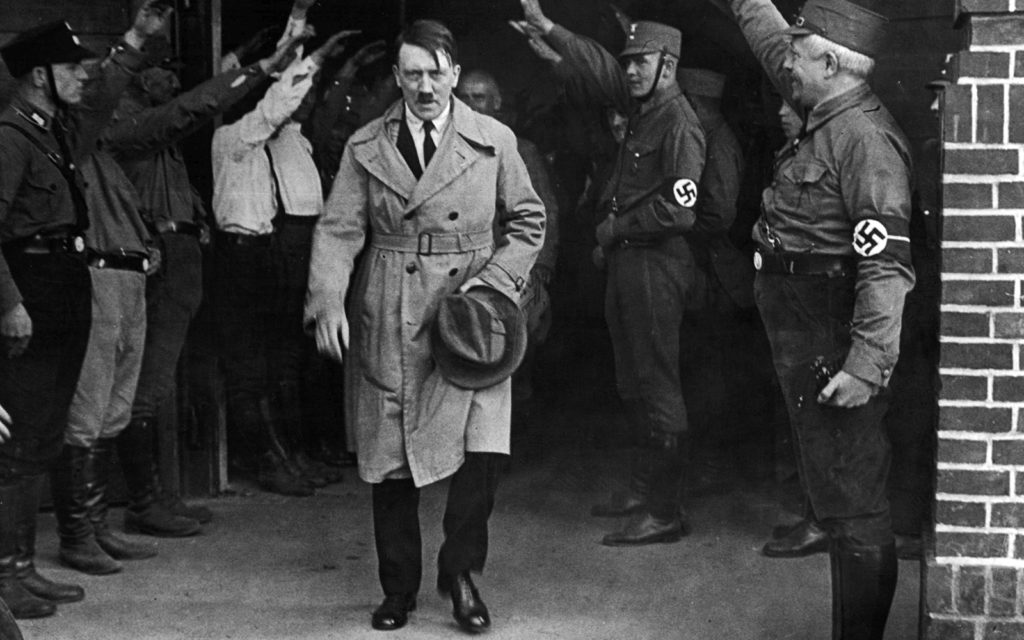Serving on a bomber in World War Two was almost a guaranteed death sentence.
Depending on the unit and time of the war, US bomber crews could experience anywhere from 50% to just over 70% of their personnel becoming killed, missing, or taken prisoner. With such appalling casualty counts, it is no wonder why those who stepped forward to volunteer did so to the shock and surprise of their compatriots.
But even with such a dangerous calling, some airmen in the community drew gasped shocks even from battle-hardened veterans at volunteering. These airmen were those that served as ball turret gunners.

What was a Ball Turret?
During World War Two, there were no fancy radars, electronic warfare suites, and stealth technology standards on modern bomber self-defense systems.
Back then, bombers protected themselves with numerous .50 caliber machine guns crewed by multiple gunners. Gunners comprised about half the crew of each bomber, with other members being able to fire back if needed.
During the early part of the war, bombers were covered with a tail gunner. There were also two gunners on the side, also known as waist gunners. There was additional personnel like the radio man or flight engineer who could also access a machine gun mount. But there was just one problem.
The most exposed part of the aircraft, the underbelly, was not covered by any of the available machine gun mounts. American engineers quickly fixed this problem by adding a retractable ball turret to the underbelly of most American bombers. The ball turret was only four feet in diameter.
The turret would be lowered and raised via a combined electro-hydraulic system once in flight. This system could be activated by the pilots remotely. In an emergency, such as a loss of power or battle damage, the waist gunners could retract the turret manually if there was time.
Inside the mount were two .50 caliber machine guns with a K-4 Sperry gun sight. These machine guns were modified versions of the infamous M2 machine guns in use in the Army and Navy. Feeding these beasts were approximately 1000 rounds of ammunition among both guns.
Ball Turret Gunner Training
It may seem that there were only a couple of requirements to be a ball turret gunner: being small enough in stature to fit inside, as well as having the gumption to fight sitting down and staring at the earth from thousands of feet in the air.
But in all actuality, training to be a ball turret gunner was quite intense. And surprisingly, it got a huge helping hand from the American film industry.
Prospective gunners first began their training with a six-week course of instruction in Texas, Arizona, or Florida. Before the trainees could even touch a weapon, instructors taught students how to identify various aircraft with mock-ups and models. They also learned skills such as basic first aid, communications, and weapon safety fundamentals.
Once they had mastered these skills, the student gunners practiced firing their weapons stationary and then from moving trucks to simulate aircraft in flight. Once the prospective gunners passed all their courses of fire on the ground, they graduated to shooting at simulated targets in the air.
Riding in the back of an AT-6 trainer aircraft, the gunners-in-training fired at towed targets at various altitudes. This training was valuable and appreciated by many gunners to prepare them for combat. But it still lacked a lot of the realism that gunners would have to face in the skies over Europe and Japan.
For starters, seldom would an enemy aircraft attack solo. Oftentimes, numerous fighters would swoop in at once.

Secondly, German and Japanese fighters would not present an easy target by flying in a straight line on a steady course and at speed. Real enemy pilots would be coming in at all kinds of angles with varying speeds and attack profiles. This was something that towed targets simply could not replicate.
Thankfully for the Army, a man named Fred Waller stepped on the scene. Inspired by the British who used similar technology, Waller wanted to invent something truly revolutionary.
He wanted a simulator that could project enemy aircraft around a room with multiple gunners being able to fire simulated munitions. Gunners and instructors would get real-time feedback through a change in the firing pitch and could score students on the number of hits scored.
These devices eventually became the Waller Gunnery Trainer. They were adopted by both the Army and Navy in training gunners.
Some studies by the Army praised their effectiveness, while others had inconclusive results. Stories from gunners who trained with them were equally divided. Some claimed they were a great help in multitasking and building their confidence. Others still thought flying in the AT-6 trainers was more beneficial.
But regardless of their opinions, it is universally agreed that few things could prepare ball turret gunners for the horrors that awaited them.
Conditions Inside the Ball Turret
It is a misconception that only the shortest personnel were drafted to fight here. It was common, but not always the rule. There have been numerous accounts of airmen pressing six feet tall serving in the turret. But once inside, a ball turret gunner had to contend with more than just the enemy.
Temperatures at the altitudes bombers fought at could range from -10 to -70 degrees Fahrenheit. At such extreme temperatures, the heated suits bombers wore were crucial.
However, many ball turret gunners complained these did not always work well, or if the turret lost power, the electricity feeding the suit was cut. This would often make dangerous situations for the gunner where they would have to extricate themselves or freeze to death.
Many veteran gunners said they would need their crew members to help pull them out after long missions since they had been semi-frozen in the turret.
Another way that gunners would face danger was by running out of oxygen. While there was plenty of emergency oxygen inside the main cabin, if a gunner’s oxygen supply ran out or was damaged, the only way for his crew to know would be to be attentive enough to see the turret stop moving around for a while. This is because the intercom system was prone to failure.
But despite its faults, the intercom system was the only way ball turret gunners had to communicate with the crew.
Since they could not physically talk to their counterparts, the ball turret gunner often needed callouts from his fellow crewmen on the location of incoming aircraft. While the gunner could see everything below him, any aircraft attacking from elsewhere were unknown unless called out by crew members.
Although the gunner’s vision was very limited around him, he had a perfect view of all four engines. During a fight, a ball turret gunner would often call out to his crew, letting them know the status of engine casualties, and was usually the first to notice them.
Speaking of vision, one veteran related a common early problem with the first ball turrets. In the back of the aircraft was a relief tube crew members could urinate into. However, this presented a problem since the urine would often collect on the turret and freeze at extreme altitudes, thereby restricting visibility.
One enterprising gunner resolved this issue by having crew members urinate in cans. These were thrown over the side while he jerry-rigged a hose he stuck through the ammunition feeders to relieve himself.
Fighting in the Ball Turret
Ball turret gunners relied heavily on communication with other crew members to fight. However, their vantage point also brought a unique distinction of being able to see the battles unfolding below.
They quite literally had a bird’s eye view of flak, fighters, and downed aircraft as the battle raged. This often presented a harrowing experience since many ball turret gunners could see the fate of downed friendly and enemy aircraft long after leaving the view of their comrades.
Even though they might have been the first to see incoming fighters from the ground, they had to be careful and conserve ammunition.
Because they could not reload their guns in flight, the gunners would have to limit their shooting to short bursts and only if they could score a hit. Additionally, the cramped nature of their space meant that most gunners had limited opportunity to escape.
While some gunners were small enough to wear their parachutes in the turret, most left their chutes in the main cabin. If the crew had to bail out, the ball turret gunner would hope to have enough time and strength to crawl out of the turret, grab his chute, and jump. Because of this long process, the ball turret gunner was often the last man out, if he got out at all.
Additionally, the gunner would often be crushed in the event of a forced landing or ditching. Because a ditched aircraft meant that it lost power or took severe damage, the ball turret might be impossible to retract.
In these cases, the airman would be crushed. Numerous ball turret gunners related that this happened frequently enough to be a real possibility of their fate.
Conclusion
Fighting in a ball turret was a harrowing experience. Cold temperatures and tight spaces and the chance of being crushed to death, combined with the frightening nature of fighting alone, made it not an undesirable billet to hold.
Nevertheless, thousands of gunners found their way underneath bombers’ bellies and fought their war from arguably the most unique vantage point of anyone in World War Two.
References
https://www.smithsonianmag.com/air-space-magazine/how-become-ball-turret-gunner-180954667/
https://www.liherald.com/stories/the-life-of-a-ball-turret-gunner,15799
https://archive.org/details/b17combatmission0000bowm/page/116/mode/2up?view=theater
https://www.wearethemighty.com/mighty-history/bomber-crew-in-wwii-was-deadly/
https://books.google.com/books?id=kCcDAAAAMBAJ&pg=PA65#v=onepage&q&f=false

